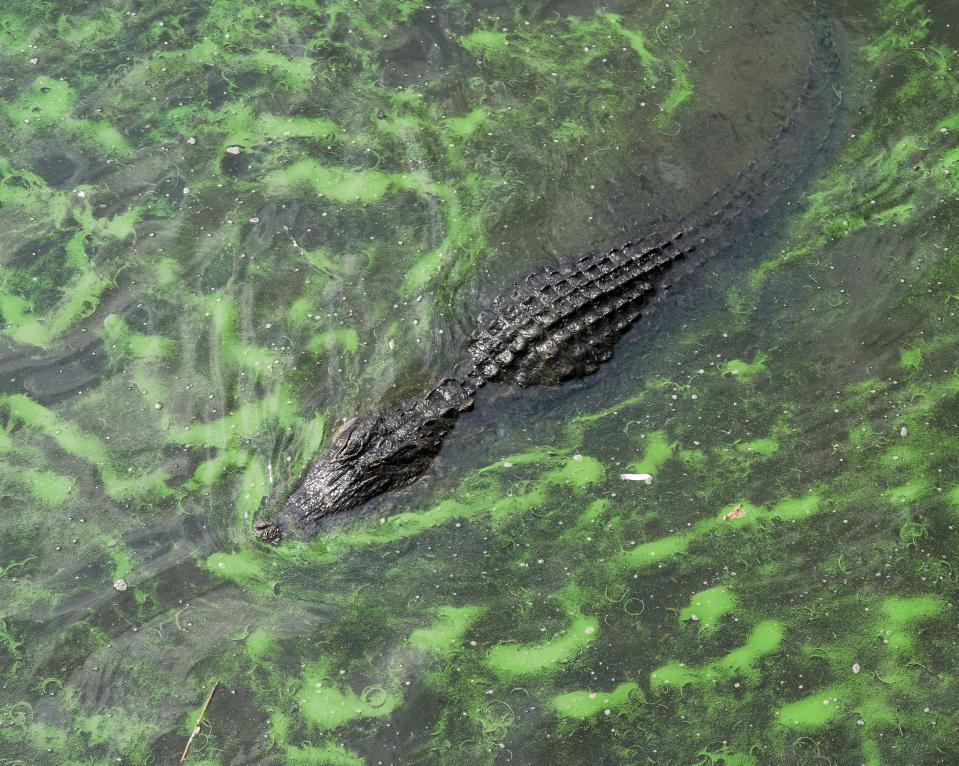Ten years after 'Lost Summer' on St. Lucie River, Indian River Lagoon, what can we fix?
Do you remember how you spent the "Lost Summer of 2013"? You might have avoided boating and fishing in the St. Lucie River and Indian River Lagoon. The nickname coined by a Stuart Realtor hung on that summer like the thick humid air that arrives every August.
The Stuart Sandbar, one of the most visited recreation areas on the Treasure Coast, was vacant. Fishing charters normally plying the St. Lucie Inlet remained on land. Boating clubs, kayak rentals and dive operators were grounded.
The fluorescent green waters looked more like spilled anti-freeze than estuary. The worst part? Twisted federal water policy created the catastrophic conditions.

Ten years later, there have been some changes, but much remains the same. One could argue 2016 and 2018 — two more years when algae visited from Lake Okeechobee — also were lost summers. The question remains how many more years will be like that?
Here are the six things we recommended in 2013:
Revisit the U.S. Sugar deal: Gov. Charlie Crist, a Republican governor in 2008, announced Florida would buy 180,000 acres of U.S. Sugar land for $1.75 billion. Crist and U.S. Sugar CEO Bob Buker called it a great day for the Everglades. Two years later, the South Florida Water Management District bought just 26,800 acres for $194 million. By 2018, Gov. Rick Scott told the district governing board to give up the option to buy the remaining 153,200 acres. This specific deal has been buried for years; let's move on.
Revive flow-way planning to move water from Lake Okeechobee to the Everglades: This must happen. Send more water south — not east and west, where nearly all the excess runoff goes now. Canals and expansive marshes must be designed to move water through the same space where 344,000 acres of agriculture exists. Few are talking about this. A solution could be generations away.
Execute the Central Everglades Planning Project: This is ongoing and is being approved by the Army Corps of Engineers and Congress. It is part of the Comprehensive Everglades Restoration Plan, which has a price tag of $23.2 billion and will take until 2050 to complete. The planning project, part of the restoration plan, costs at least $2.09 billion and has the goal of moving water from Lake Okeechobee to the Everglades and Florida Bay. The Everglades Agricultural Area Reservoir was added to the plan in 2018 at a price tag of $3.31 billion. Celebrated by Gov. Ron DeSantis as "the crown jewel" of Everglades restoration, it may handle only about 10% of discharges to coastal estuaries. State and federal money is flowing, which is a good sign. If done right, every drop that heads south will help.
Restore the Kissimmee River: In July 2021, the Army Corps of Engineers celebrated restoration of 22 miles of the original, meandering Kissimmee River. The project took two decades and cost $1 billion. The restoration slows the flow of water into Lake Okeechobee. The slowing effect helps clean water as it approaches the lake. It was money well spent.
Pinpoint biggest culprit in northern Indian River Lagoon: Brown algae blooms generated by high nutrient levels in waters of the Indian River, Banana River and Mosquito Lagoons led to a decade-long die-off of seagrass, followed by significant manatee deaths from 2019 to 2021. There are plans to spend an estimated $162 million moving wastewater treatment plants in Vero Beach and Fort Pierce inland, far from the shores of the Indian River Lagoon. Rules keeping fertilizers and herbicides from the lagoon have passed (but jeopardized by special interests). Money has been allocated to help residents replace septic tanks with sewer connections. These are expensive, but necessary efforts.
Complete the C-44 Reservoir: The $339 million, 14-year-long project was completed in November 2021 and celebrated with a ribbon-cutting ceremony along the dike of the 4-square-mile reservoir east of Indiantown. Nearly two years later, the reservoir is still not being used to capacity. Built to store 15 feet of water, Col. James Booth told TCPalm Aug. 11 it is storing only about 4 feet of water because of operational problems. On Aug. 5, the Army Corps discharged 19 million gallons through the St. Lucie Lock and Dam to lower the level of the canal. That's about the same amount the reservoir could have taken in had it been working properly. The C-44 Reservoir must be retrofitted to work correctly.
Editorials published by TCPalm/Treasure Coast Newspapers are decided collectively by its editorial board. To respond to this editorial with a letter to the editor, email up to 300 words to TCNLetters@TCPalm.com.
This article originally appeared on Treasure Coast Newspapers: Anniversary: What can help save St. Lucie River, Indian River Lagoon?

